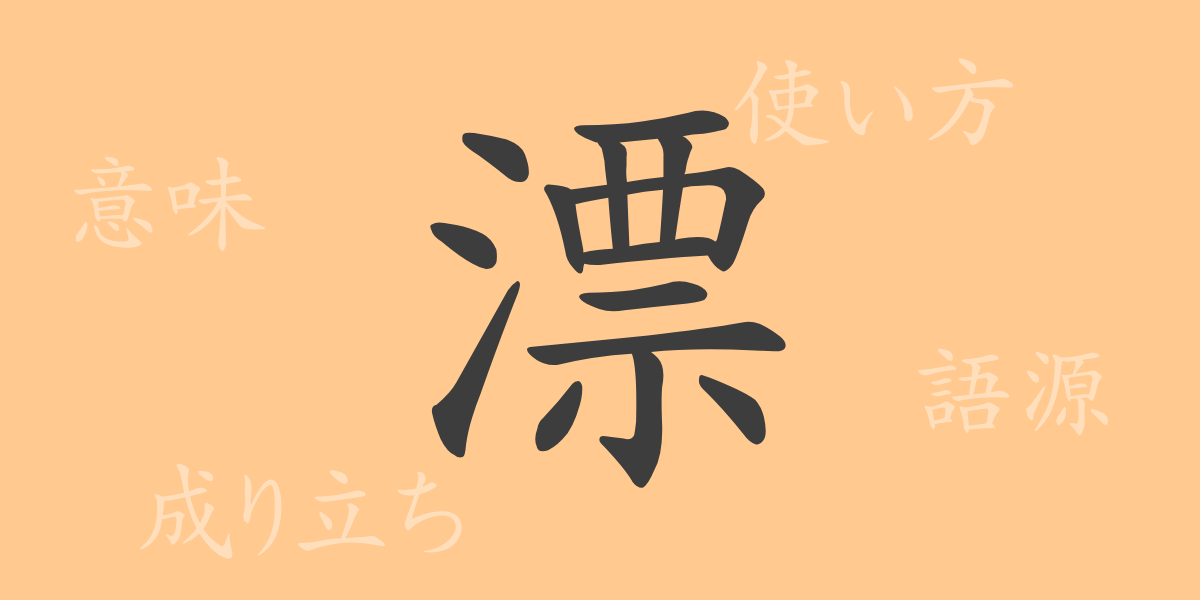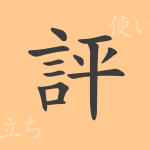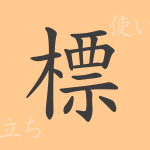In the Japanese language, there are numerous kanji characters that express nature and emotions with deep sentiment. Among them, “漂 (hyō)” is a captivating character used in various scenes, from physical movement to psychological wavering. This article focuses on “漂 (hyō),” delving into its origins and modern usage examples.
Origins of 漂 (hyō)
“漂 (hyō)” is a kanji related to water, originally used in ancient China to describe the act of drifting on water. Its composition includes “氵 (sanzui),” meaning water, and the phonetic component “票 (hyō),” symbolizing the movement of gliding on a water surface. Over time, it has come to represent not only physical movement but also the wavering of the mind and emotions.
Meaning and Usage of 漂 (hyō)
“漂 (hyō)” primarily means “to drift,” “to wander,” “to be pure,” and “to be elegant.” It is used in a wide range of contexts, from concrete descriptions like “leaves drifting on the river” to metaphorical expressions like “the heart drifts.” Additionally, it can mean “to purify,” as seen in words like “漂白 (hyōhaku),” which means to bleach or cleanse.
Reading, Stroke Count, and Radical of 漂 (hyō)
“漂 (hyō)” is one of the commonly used kanji in Japan, frequently appearing in daily life.
- Reading: On’yomi (音読み) is “ヒョウ (hyō),” and Kun’yomi (訓読み) is “ただよう (tadayou)”
- Stroke count: 15 strokes in total
- Radical: Water (水, sanzui)
Idioms, Proverbs, and Compound Words with 漂 (hyō)
Here are some idioms and compound words that include “漂 (hyō)”:
- 漂白 (ひょうはく, hyōhaku): To bleach or to cleanse by removing stains.
- 漂流 (ひょうりゅう, hyōryū): To drift aimlessly on water or in the air.
- 漂泊 (ひょうはく, hyōhaku): To wander aimlessly, to roam.
- 漂着 (ひょうちゃく, hyōchaku): To drift ashore, to be carried by currents.
- 漂瀬 (ひょうせ, hyōse): A shallow formed by accumulated sand or mud floating on the water surface.
These idioms and compound words reflect the meanings of “漂 (hyō)” such as “to flow,” “to wander,” and “to be pure.”
Summary of 漂 (hyō)
The kanji “漂 (hyō)” enriches Japanese expressions with its beautiful meanings and diverse usages. Like leaves drifting on water, it freely floats within our language, delicately portraying emotions and landscapes. From everyday conversations to literary works, the imagery woven by this single character expands the possibilities of language, deeply resonating with listeners and readers. Understanding and appropriately using the unique charm of “漂 (hyō)” is essential for enhancing the richness of Japanese expression.

























